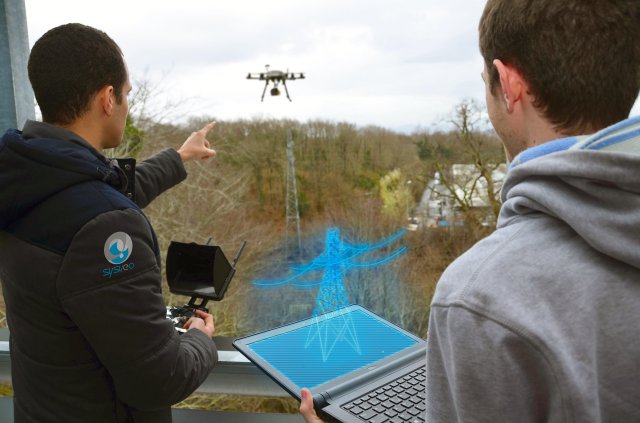 Sysveo, a French company that builds drones, has received European Space Agency (ESA) support to develop a patent it purchased a few years back, which looks at interactive broadcasting of images.The company is working on software that would allow drones to include augmented reality 3D images in the videos they shoot while flying over a given location.
Sysveo, a French company that builds drones, has received European Space Agency (ESA) support to develop a patent it purchased a few years back, which looks at interactive broadcasting of images.The company is working on software that would allow drones to include augmented reality 3D images in the videos they shoot while flying over a given location.
One potential application is to see what building projects would look like before they exist. If you’re wondering how a new house would blend in with the rest of the neighbourhood, all you have to do is fly your drone there: It’ll broadcast back a live video that includes a realistic model of your design exactly where you plan to build it.
The project is still at an early stage—there are 12 months to go before the end-product’s release—but Sysveo’s CEO Clement Alaguillaume is already sure that it would be appealing for the construction sector. “Architects could easily use this for creating a real-time simulation of the building they designed, and see it on the ground,” he told me over the phone. “And they could take real-time decisions without going back to their office, as they could make as many simulations as they want with the drone.”
Sysveo’s idea receives funding from the European Space Agency, and builds on a patent held by CNES—France’s space agency— for the interactive broadcast of images from a robot moving in a predeterminate space.The company acquired the patent in late 2013, and now it’s working to use the idea in its own way. A drone equipped with the software exploring a known location would tap into a “graphic library,” where its owner can upload the images he or she wants the drone to overlay over the real world.
A key advantage to this mix of drone flight and augmented reality is that there’s no real innovation to the drone technology per se. “There’s no hardware component to our project,” Alaguillaume explained. “Everything happens at the software level, through complex algorithms.”
The product is going to be released as an open-source software, which implies that it could be modified to work on a gamut of different drones. “We use professional drones, but the software could also work on cheaper ones,” Alaguillaume said. “The idea is that you could use this with any drone you have.”
Source: Motherboard
